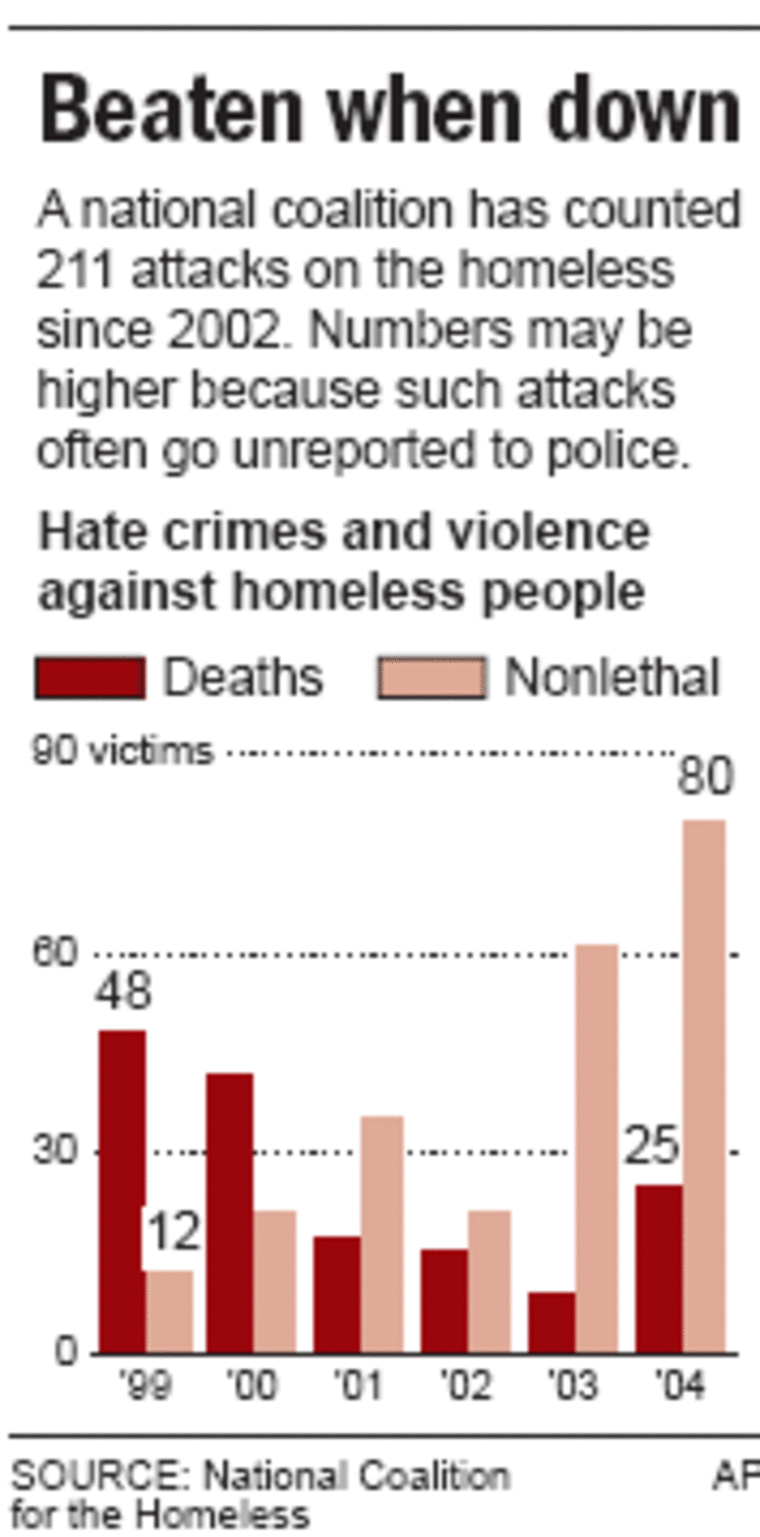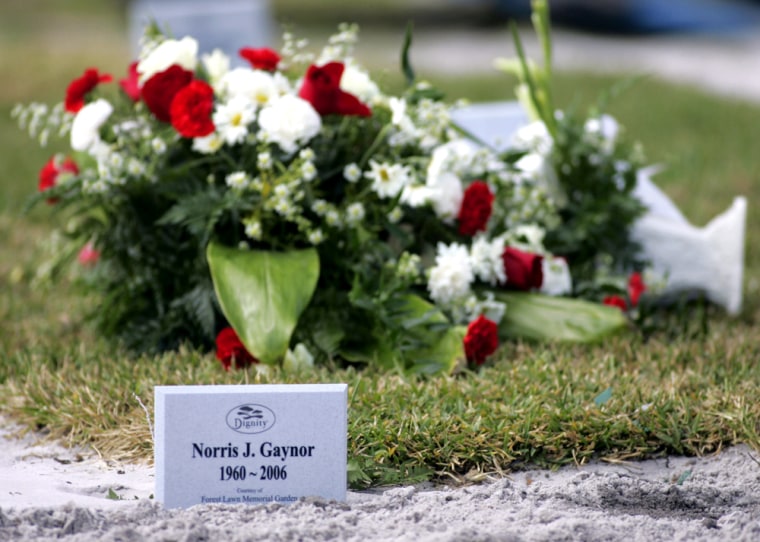A string of beatings of three homeless men in Fort Lauderdale in a single night last week has cast a spotlight on a brand of crime activists say has practically become sport among young people around the country.
Police say the attacks were carried out by a group of teenagers who piled into a car with baseball bats, a golf club and a paintball gun and went looking for homeless people to beat up.
“I wish I could say this was shocking and appalling, but it’s not. We see it all the time,” said Laura Hansen, executive director of the Broward Coalition for the Homeless. She said she sees the bruises, black eyes and broken teeth suffered by homeless victims on a daily basis.
From Florida to Alaska, dozens of homeless people are attacked each year, most often by white men under 20, according to the Washington-based National Coalition for the Homeless. Baseball bats are a favored weapon, as well as rocks, bricks, fists and feet, pellet guns and knives.
Three teenagers are charged with murder in the Jan. 12 beating death of 45-year-old Norris Gaynor, whose head and chest were bashed with a baseball bat while he slept on a park bench. He was also shot several times with yellow paintball slugs.
One the same night, another man was assaulted with a golf club outside a nearby church. A third was bludgeoned with a bat outside a college building — an attack that was captured on surveillance video, which helped lead to the arrests. Both men were seriously injured.
“This will shine a very bright light on an issue that has been camouflaged and buried for a long time,” said Marti Forman, chief executive of the Cooperative Feeding Program in Broward County. “People put blinders on until it’s right under their nose.”
The National Coalition for the Homeless has documented 386 attacks on the homeless over the past six years, including 156 deaths. Of the total number of attacks, 211 have been recorded since 2002.
The real numbers are probably much higher, because homeless people often cannot or will not go to the police, and the analysis is not an exhaustive look at every jurisdiction in the country, said Michael Stoops, executive director of the homeless coalition.

“Homeless people just take it on the chin and move to a more secluded area,” Stoops said. “We know that this is underreported.”
Advocates for the homeless say that in most cases, the attackers beat up the homeless for kicks, or out of contempt for the down-and-out.
“They do this because they think they can, that they can get away with beating a homeless person and nobody will care, and the homeless won’t be able to fight back,” Stoops said.
Many homeless people say they live in fear of attack every night and often try to sleep somewhere well-lit or at least well-traveled.
In a series of interviews after the Florida attacks, each person had a story about being confronted or assaulted or knowing people who had been, often by groups of youths who seemed to enjoy what they were doing.
“You’ve got to sleep and be halfway awake at night,” said Van Jackson, 53. “This case is the worst I’ve seen so far, but it does happen all the time.”
Added 30-year-old Jason Grablauskas: “They mess with us all night and we didn’t do anything. It don’t make no sense.”
Police in Fairbanks, Alaska, warned the homeless there to be extra vigilant in September after a series of attacks by groups of teenagers wielding baseball bats. A similar warning was issued in Sacramento, Calif., in June after at least four homeless people were hurt in BB gun shootings.
Homeless people were bashed with clubs in a series of summer attacks in Cheyenne, Wyo. And in Los Angeles, two 19-year-old men who said they were inspired by videos depicting fights between homeless people were arrested in August on charges of hitting people with aluminum baseball bats while they slept.
The Fort Lauderdale beating case might not have yielded any arrests and almost certainly would have gotten little attention if not for the video camera.
Brian Hooks and William Ammons, both 18, and Thomas Daugherty, 17, have been jailed on murder and assault charges. Hooks’ lawyer has said the young man did not inflict any of the blows. Ammons has yet to hire a lawyer. Daugherty’s attorney has not commented.
